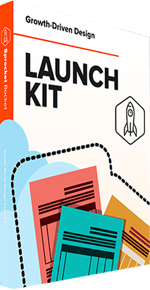In our previous blog post, we explored the importance of having a structured approach to hiring. Now, we’re diving deeper into the first critical step: defining your needs clearly. This foundational element sets the tone for the entire recruitment process, ensuring that you attract and select the right candidates for your organization.
Why Defining Your Needs is Crucial
When hiring, it’s easy to get caught up in the excitement of finding a new employee. However, if your job description and candidate requirements are vague or poorly defined, you may end up wasting time and resources. A clear understanding of what you’re looking for helps you streamline the hiring process, attracting candidates who not only meet the skills requirement but also align with your company culture.
How to Define Your Needs
- Assess Current Gaps: Start by evaluating the current team and identifying any skills gaps or deficiencies. Consider asking existing team members for their input on what skills and attributes would help them in their roles.
- Create a Detailed Job Description: A well-crafted job description is more than just a list of tasks and responsibilities. It should include:
- Essential Skills and Qualifications: Highlight the technical and soft skills essential for the role.
- Key Responsibilities: Clearly outline the day-to-day tasks and overall responsibilities.
- Cultural Fit: Describe the values of your organization and the type of personality that would thrive in your environment.
- Engage Stakeholders: Collaborate with hiring managers, team leads, and even current employees in the interview process. Their insights can provide a fuller picture of the role and help ensure alignment in expectations.
- Prioritize Needs: Understand that not every candidate will tick all of your boxes. Prioritize needs into "must-haves" and "nice-to-haves." This categorization allows you to make quicker decisions without compromising the quality of your hires.
- Anticipate Future Needs: As your organization grows, the skill sets required will likely evolve. Think about potential shifts in the industry and how they might affect the role you’re hiring for. This forward-thinking approach can help you find candidates who are not only suitable for the present but also adaptable to future changes.
- Set Clear Goals: Outline what success looks like for the new hire within the first 30, 60, and 90 days. Establishing these benchmarks helps you assess the ongoing effectiveness of your hiring strategy.
- Utilize Data: If your organization has previously hired for similar roles, review past hiring data to identify which attributes were present in successful candidates. This data-driven approach can guide your current hiring process.
Clearly defining your needs not only aids in crafting a more effective job description but also lays the groundwork for a seamless and efficient hiring process. By taking the time to articulate precisely what you’re looking for, you enhance your chances of finding the perfect fit for your team—leading to greater employee satisfaction and retention in the long run.
Stay tuned for our next blog post, where we will explore the second step in building a quality hiring process. Until then, take a moment to reflect on your current hiring practices: Are you defining your needs clearly enough to attract the right talent?
Tags:

May 20, 2025


